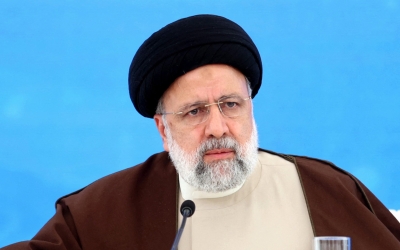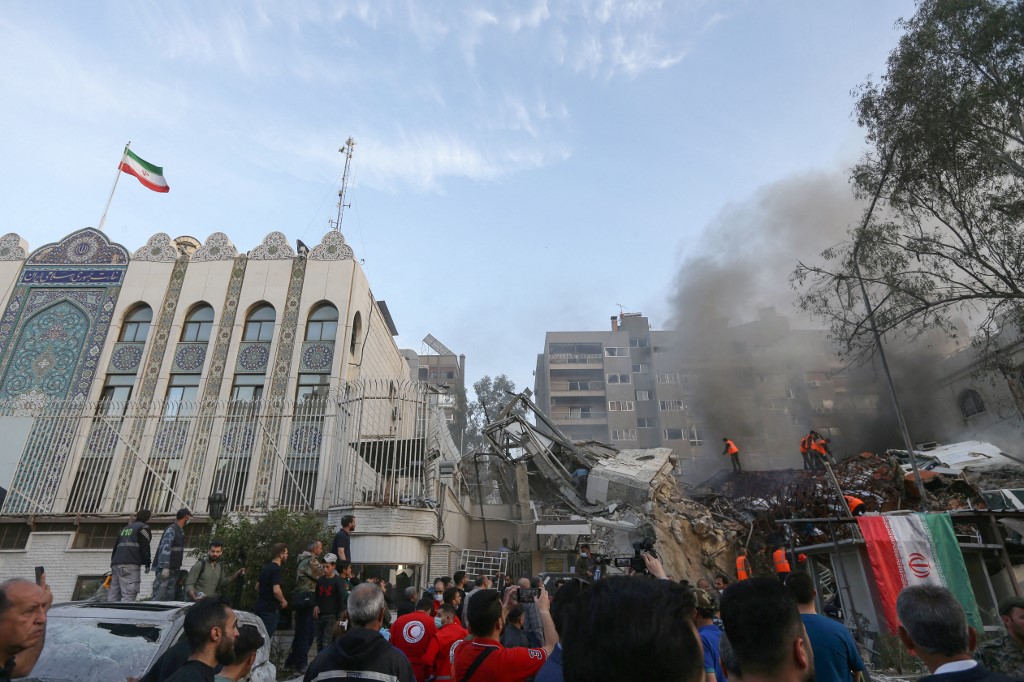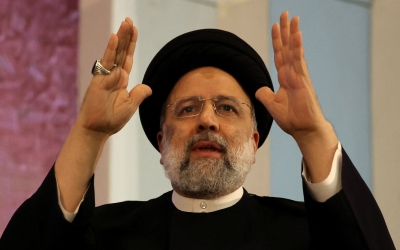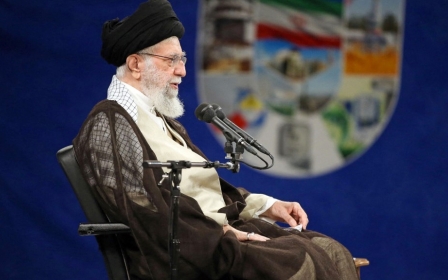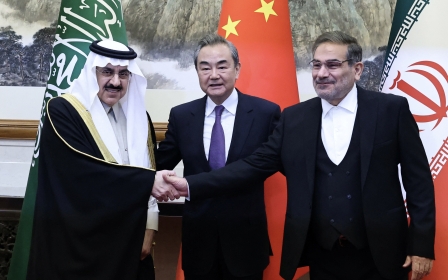Ebrahim Raisi: The president's death leaves Iran at a crossroads

On Sunday 19 May, a helicopter carrying Iranian President Ebrahim Raisi, Foreign Minister Hossein Amir-Abdollahian, and other officials crashed in the mountains on Iran’s border with Azerbaijan.
Raisi was on his way back from the opening ceremony of a joint major dam with Azerbaijan. The terrible weather made the search efforts extremely difficult. As a result, nations around the world offered their assistance in emergency efforts to locate the downed helicopter and Turkey, Russia and Iraq sent rescue teams.
On Monday, Iranian officials confirmed that the 63-year-old president, foreign minister and others had been found dead at the crash site.
Raisi was born in the northeast Iranian city of Mashhad. Aged 20, he was appointed prosecutor in the city of Karaj, and gradually rose to be head of Iran’s judiciary. He was elected president in June 2021.
The president's death came at a fraught moment in the Middle East. Except for Israel, world leaders offered their condolences.
New MEE newsletter: Jerusalem Dispatch
Sign up to get the latest insights and analysis on Israel-Palestine, alongside Turkey Unpacked and other MEE newsletters
Raisi, as Iran’s president, was the country's second-most powerful person, after Supreme Leader Ayatollah Ali Khamenei.
Iran's First Vice President Mohammad Mokhber is now acting president, and top negotiator Ali Bagheri Kani has been appointed acting foreign minister.
Based on the Iranian constitution, a new president will be elected within 50 days. However, Raisi's legacy will have an impact on Iranian domestic and foreign relations going forward.
Iran nuclear deal
Although most principlists (conservatives) vehemently opposed the Iran nuclear deal, known as the Joint Comprehensive Plan of Action (JCPOA), Raisi’s government made every effort to revive it, albeit unsuccessfully, with the Biden administration showing little appetite to move forward with it.
The Biden White House and the European Union were not inclined to revive the JCPOA due to Iran's cooperation with Russia, especially in the Ukraine war, and then Iran's support for Hamas in the war against Israel.
Biden not only retained around 1,500 sanctions imposed against Iran during the Donald Trump era, he also added approximately 700 new sanctions.
European governments also imposed dozens of new sanctions against Iran. Due to them, in early 2024, ordinary Iranians were facing high inflation and an even more weakened currency. The free market exchange rate surged from 250,000 rials to the dollar at the end of Hassan Rouhani's presidency in 2021, to over 600,000 rials in March 2024.
As a result, the most significant reaction from the Raisi government was to distance itself from the JCPOA, expand its nuclear programme and become a nuclear threshold state. That is the most significant legacy of Raisi’s era. It remains to be seen if Iran will become a nuclear state following Raisi's death.
The US and Europe currently lack any diplomatic initiative or willingness to engage in any serious and broad dialogue with Iran, focusing instead on increasing sanctions, threats and bullying.
If this trend continues, then regardless of who the next president of Iran might be, Tehran will likely press ahead with acquiring nuclear capabilities.
Iran-Israel tensions
During Raisi's presidency, tensions between Iran and the US-Israel axis reached their highest levels since the revolution in 1979. On 1 April 2024, an Israeli air strike on an Iranian consular building in Syria's capital Damascus killed multiple senior Iranian military officers.
In response, on 13 April, Iran carried out its first-ever direct attack on Israeli territory by deploying over 300 unmanned aerial vehicles and missiles. A continuation of the current trend between Iran and the West and Israel could well lead to an all-out war between Iran and Israel.
The third major development during Raisi's presidency was the rapprochement between Iran and Saudi Arabia.
Under Rouhani, in January 2016, pro-principalist forces, angered by Saudi Arabia's executions of a prominent Shia cleric and 47 prisoners, broke into the Saudi embassy, leading to a diplomatic crisis between Riyadh and Tehran.
In March 2023, China brokered the Iran-Saudi rapprochement.
However, the main reason for this development was that Saudi Crown Prince Mohammed bin Salman had adopted a new strategy to transform Saudi Arabia into the leading economic power in the Middle East within the framework of Plan Vision 2030.
To achieve this goal, he acted to normalise relations with regional countries, including Iran, Qatar, Egypt, and Turkey, and even with Israel, while also expanding relations with the powers of the Eurasian bloc, Russia and China.
This development laid a foundation for better Arab-Iran relations during the next Iranian administration.
The next major regional-international development was Iran’s permanent membership of the Shanghai Cooperation Organisation (SCO), and Iran’s application to join the Brics group of Brazil, Russia, India, China and South Africa that Beijing and Moscow cast as a powerful counter-pole to the West.
If the hostilities between the West and Iran continue, Iran's membership of these two important organisations would provide a basis for completing the process of Iran's pivot to the east.
Unified governance
Finally, at home, Raisi was the first president of Iran during the 35-year leadership of Ayatollah Khamenei to be fully aligned with the leadership's policies domestically, regionally and internationally.
The previous presidents from the reformist or moderate camps, such as Akbar Rafsanjani, Mohammad Khatami and Rouhani, had different views on both foreign and domestic policy from the leadership.
Even Mahmoud Ahmadinejad, elected from the principlist front, eventually had extensive disagreements with the leadership.
Raisi was the first president of Iran during the 35-year leadership of Khamenei to be fully aligned with the leadership's policies
In fact, Raisi's era marked the first period in which governance in Iran had become unified, with the principlists holding power across the government, parliament, judiciary, security and military institutions.
Under Raisi, however, the principlist front experienced a division. Moderate figures of the camp such as Ali Larijani, former speaker of parliament, were sidelined, while semi-moderate figures such as Mohammad Bagher Ghalibaf, the current speaker of parliament, faced severe criticism from the more radical faction.
Raisi sought to position himself in the middle of this rivalry. Therefore, the idea of "unity of governance" came into question.
Consequently, after Raisi, two hypotheses regarding Iran's domestic policy are foreseeable.
One suggests that the radical principlists will tighten their grip and fully control the government, which may lead to escalated tensions between Iran and the West.
The second hypothesis is that, with the guidance of the leadership, moderate forces within the principlist camp will enter the scene, which would increase the chances of easing tensions between Iran and the West.
The views expressed in this article belong to the author and do not necessarily reflect the editorial policy of Middle East Eye.
Middle East Eye delivers independent and unrivalled coverage and analysis of the Middle East, North Africa and beyond. To learn more about republishing this content and the associated fees, please fill out this form. More about MEE can be found here.



